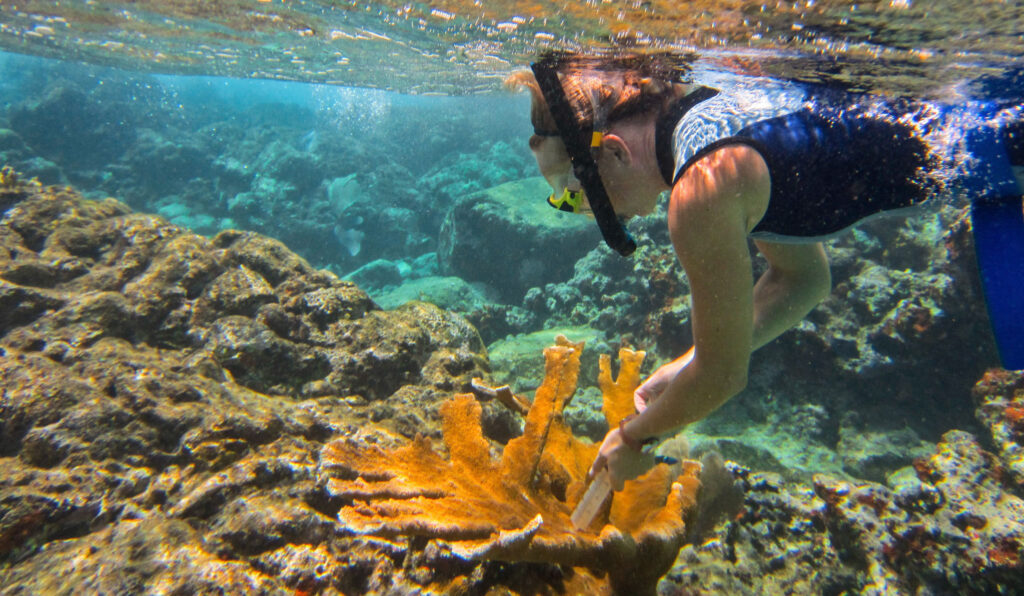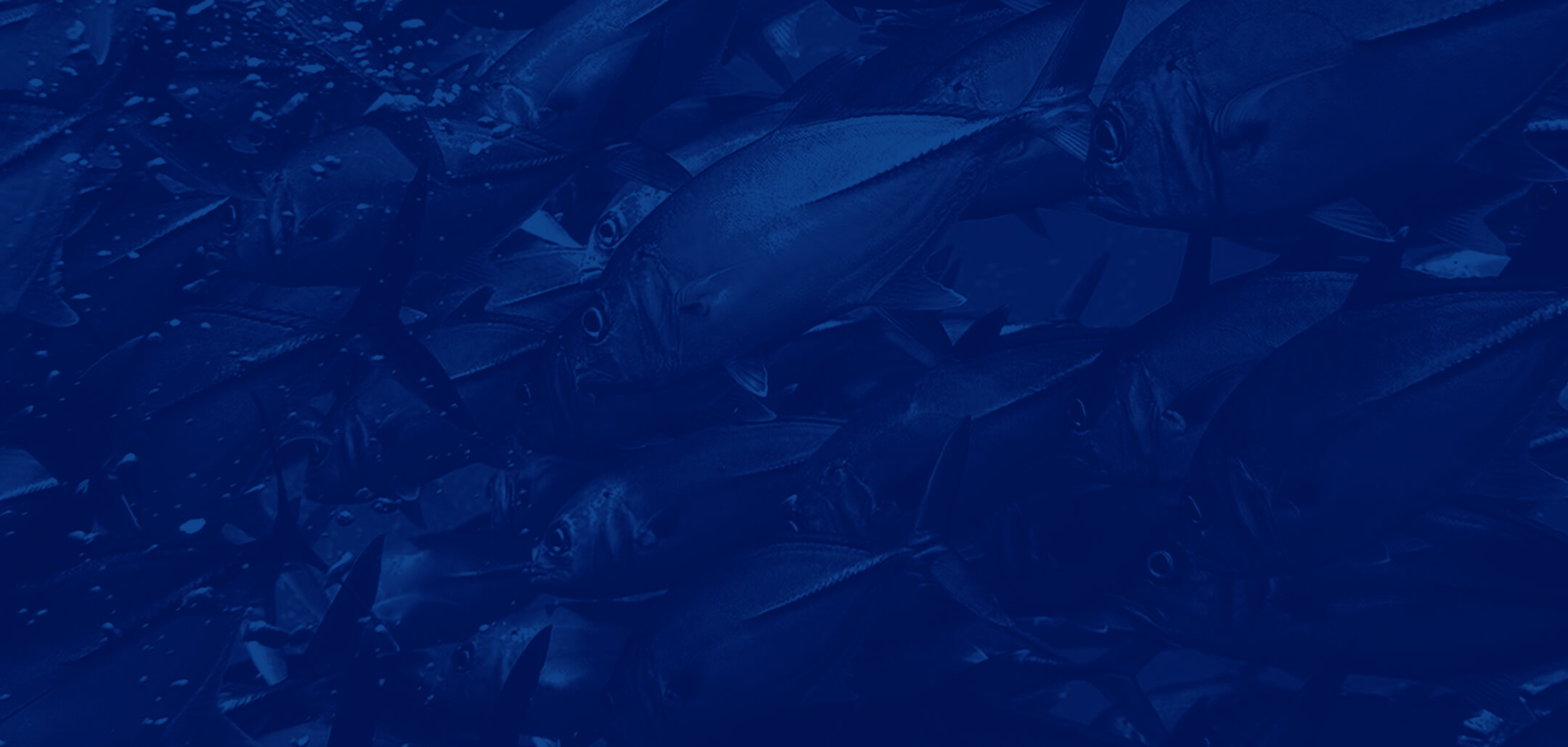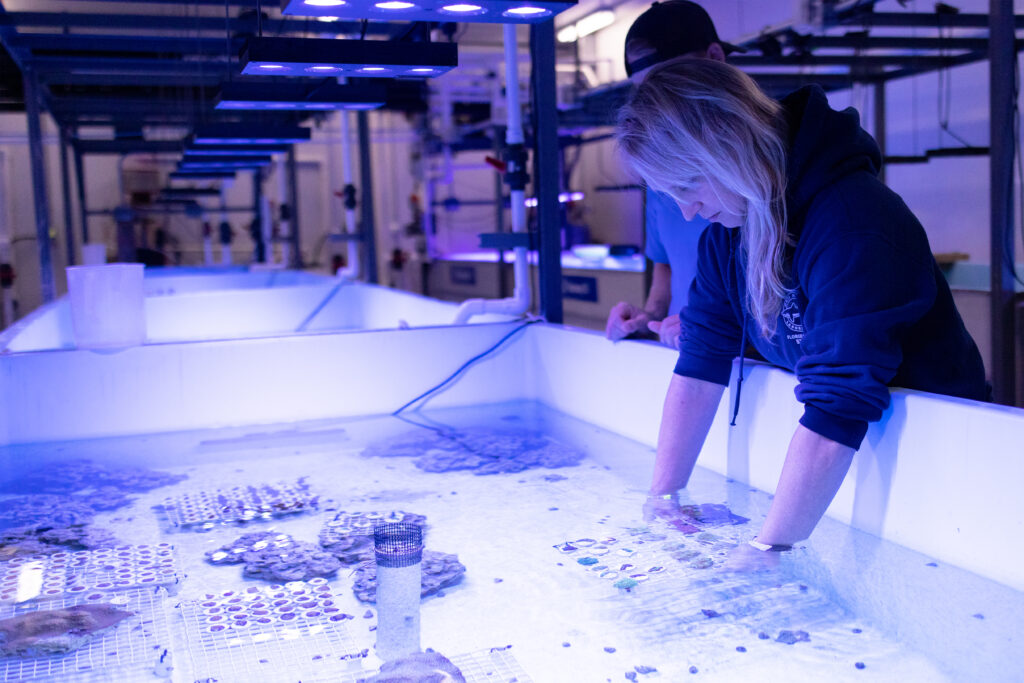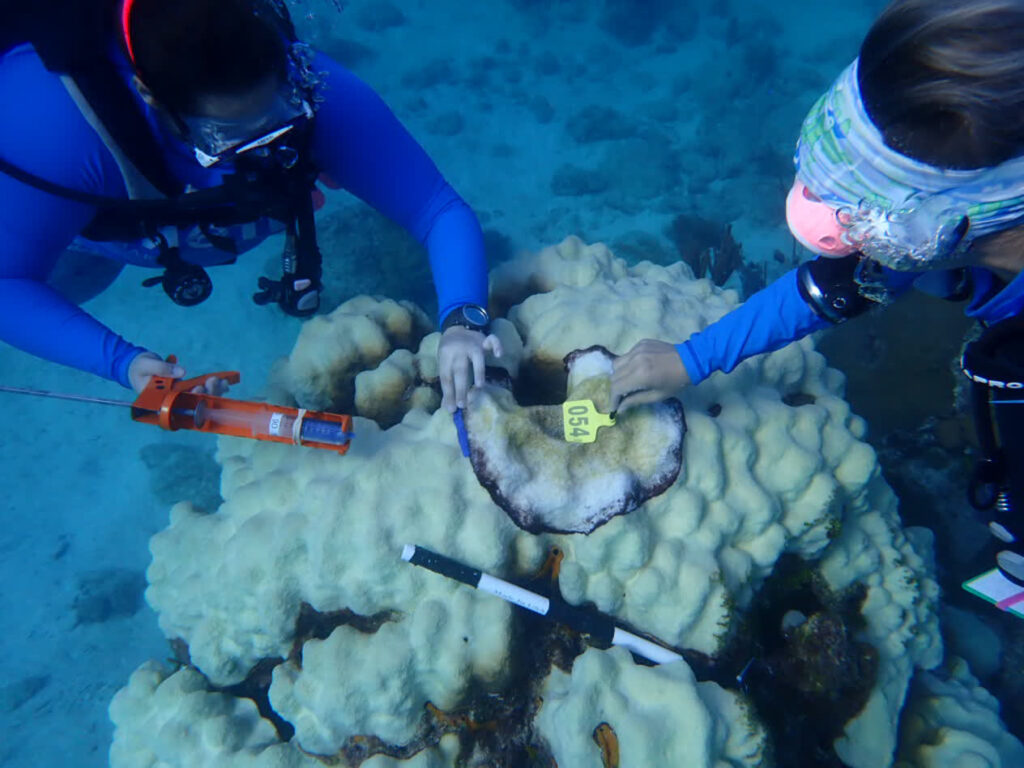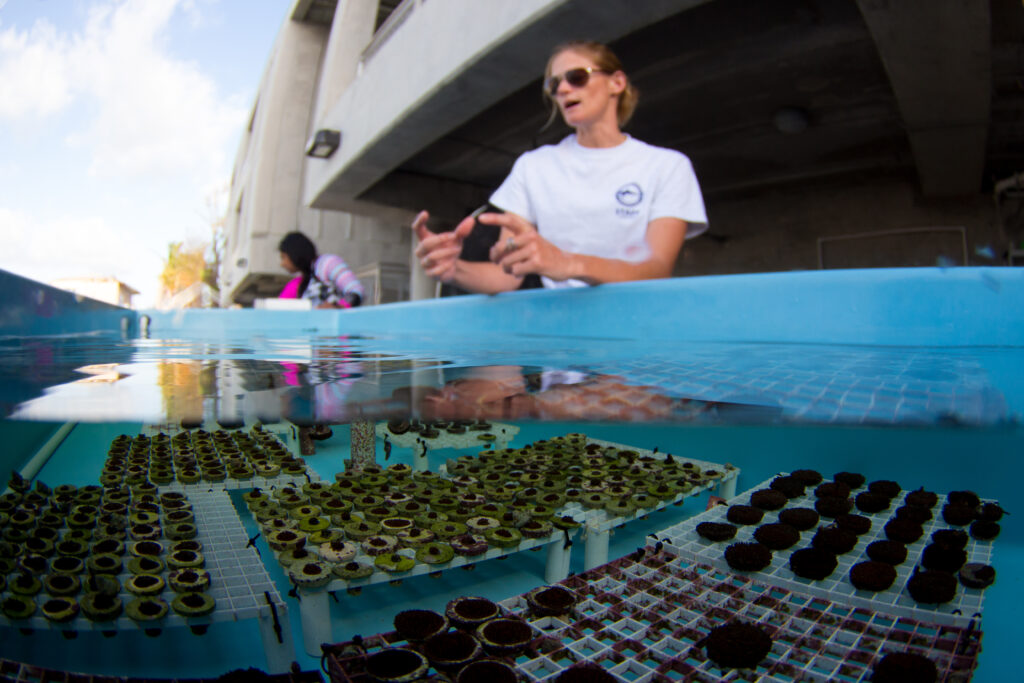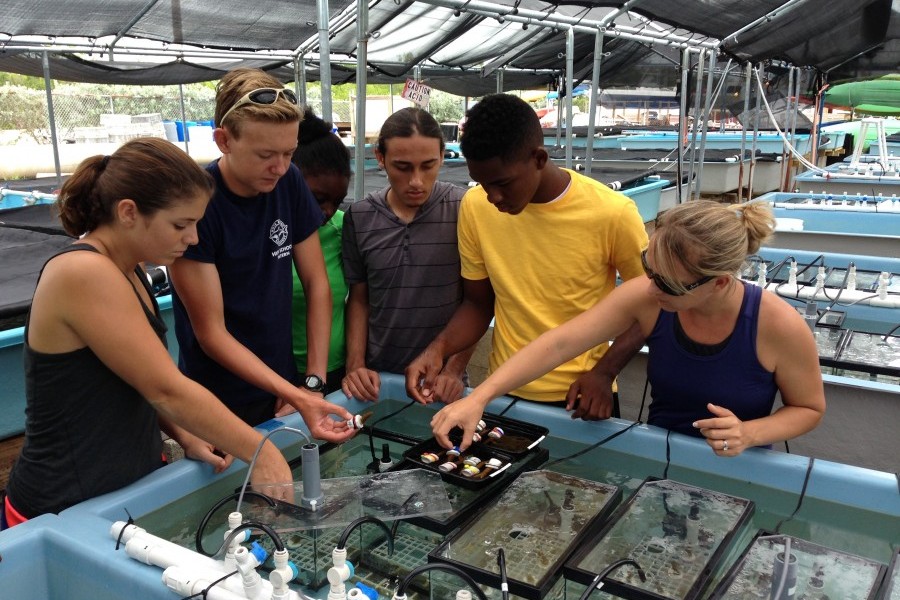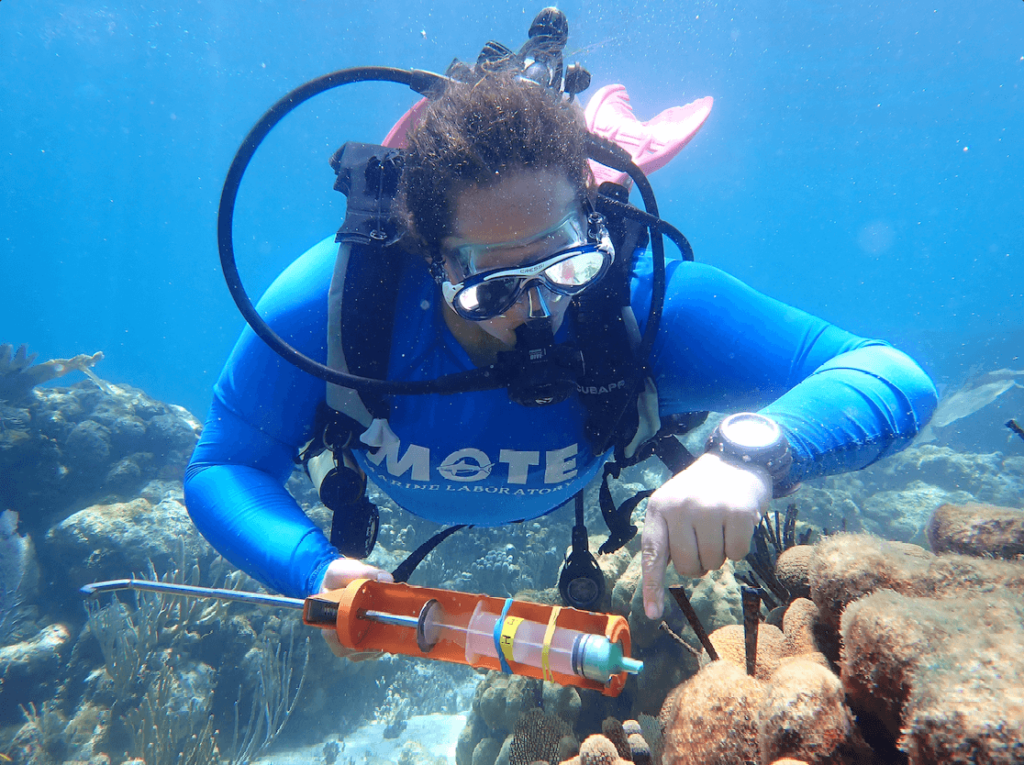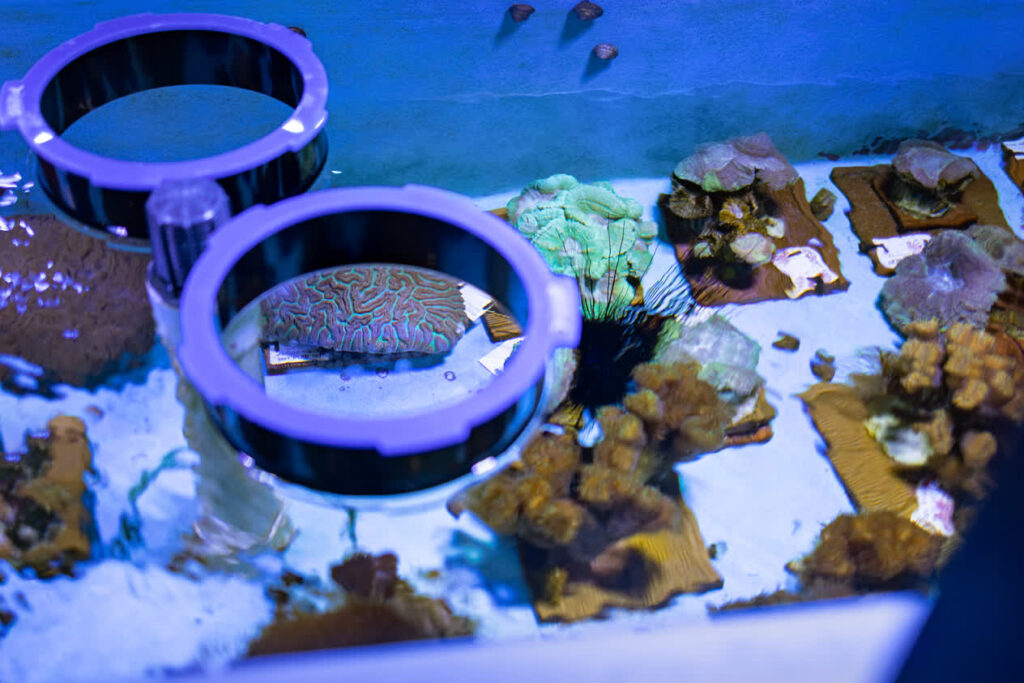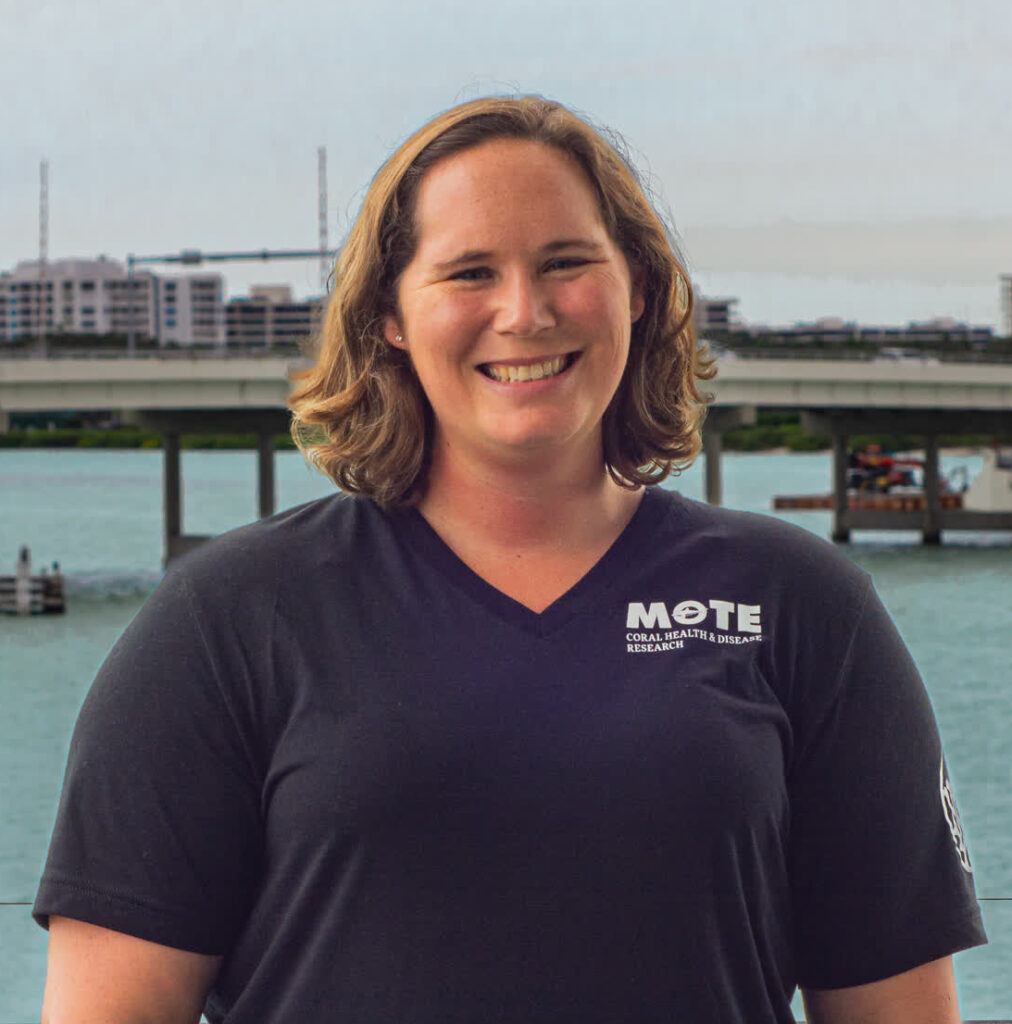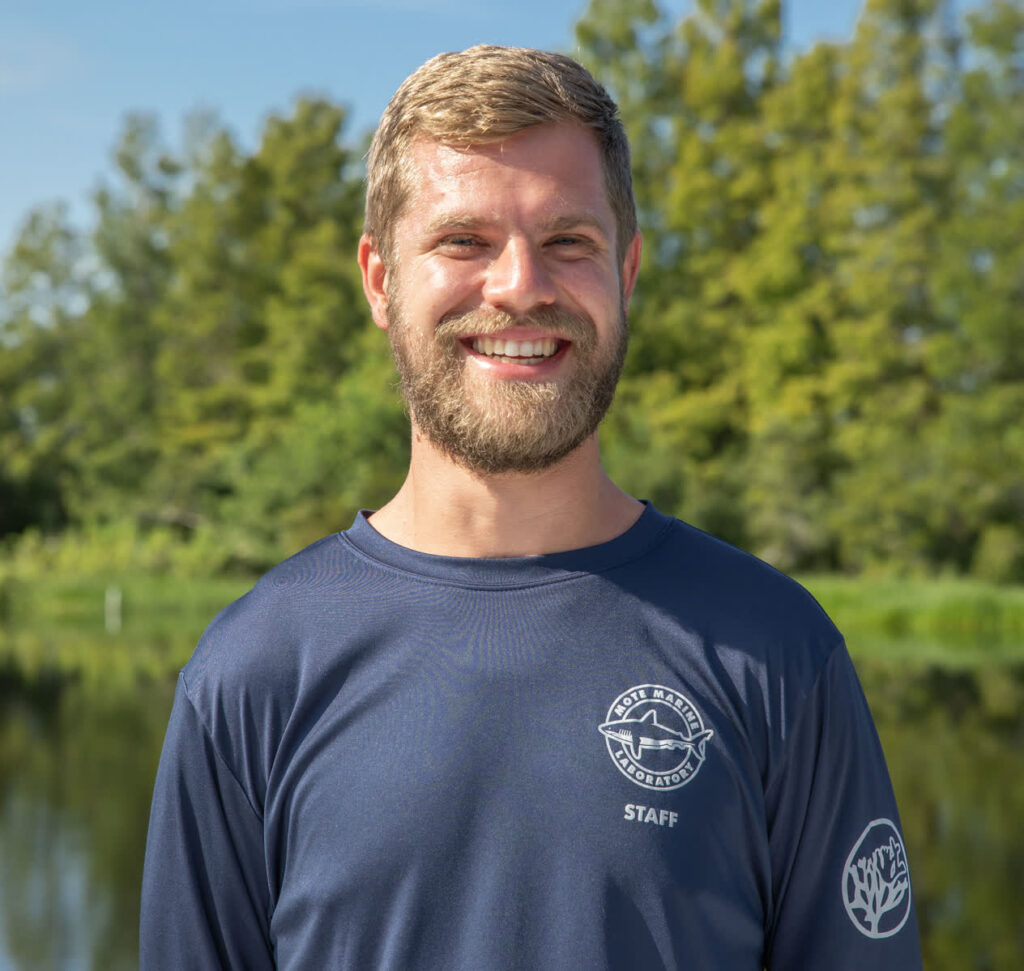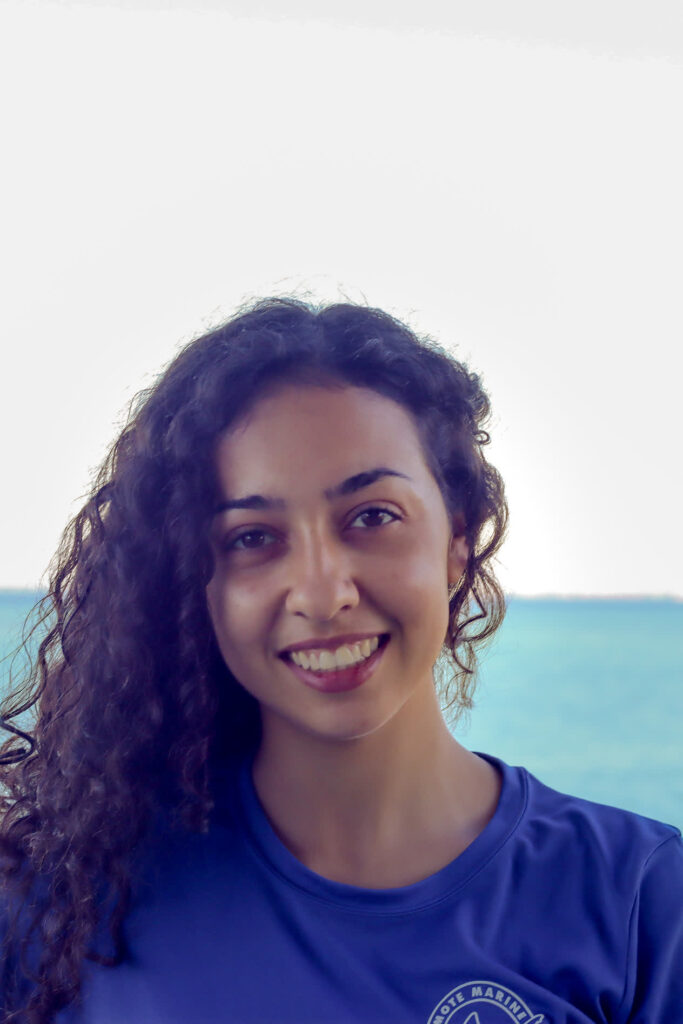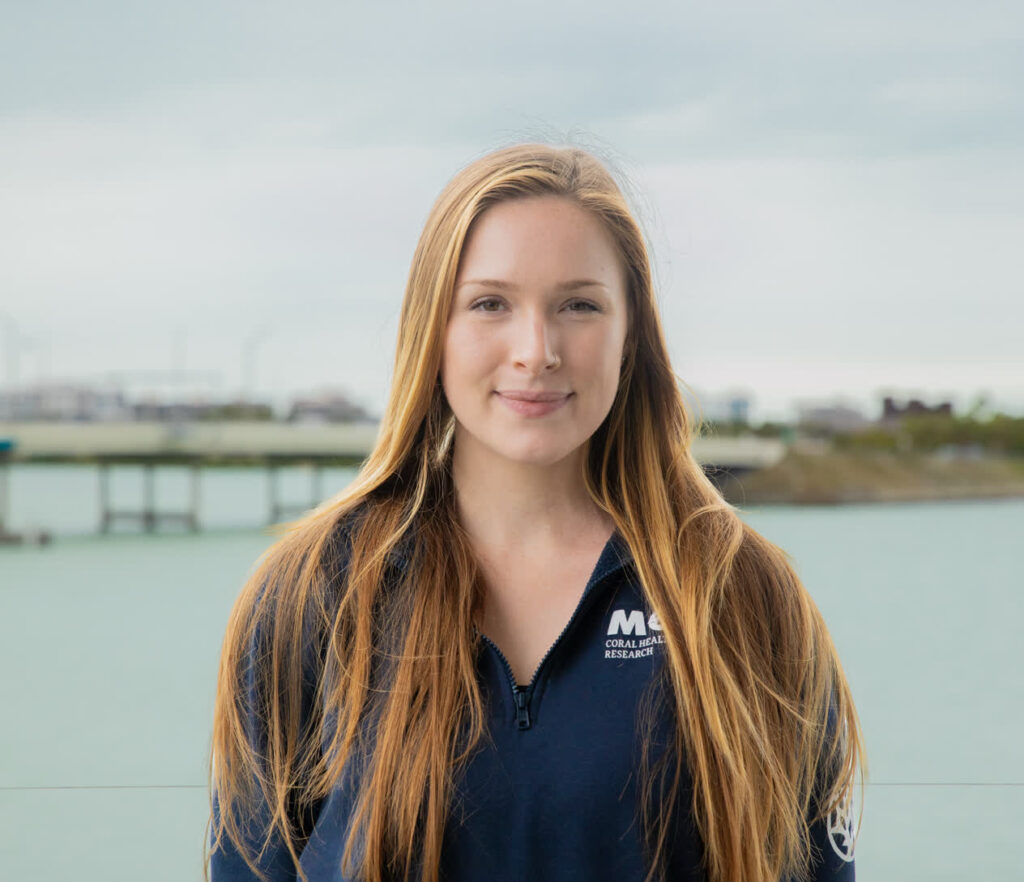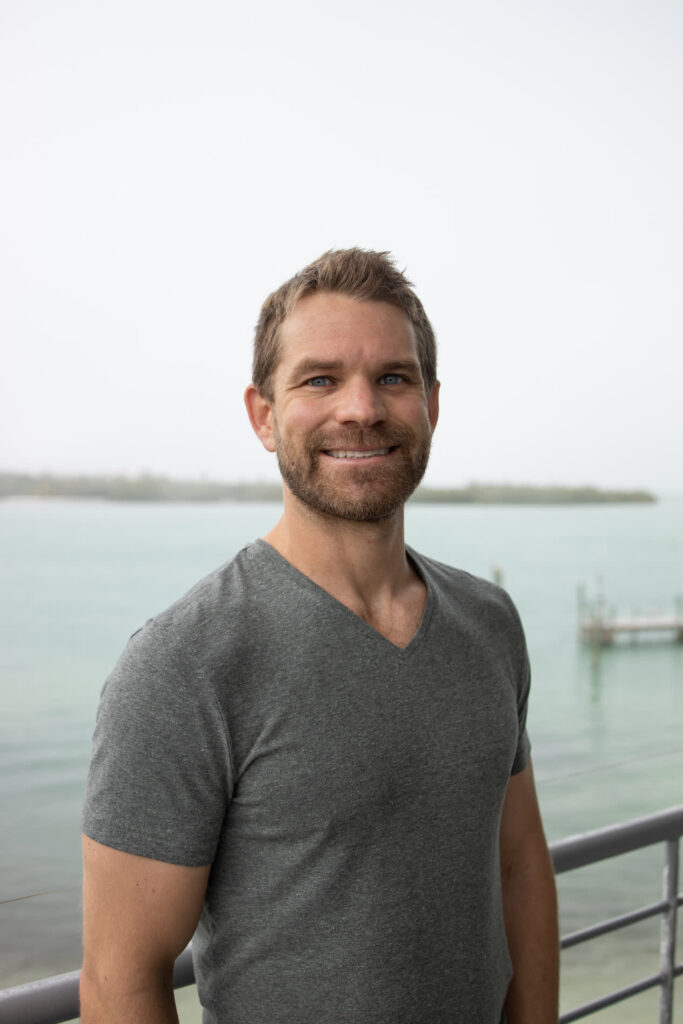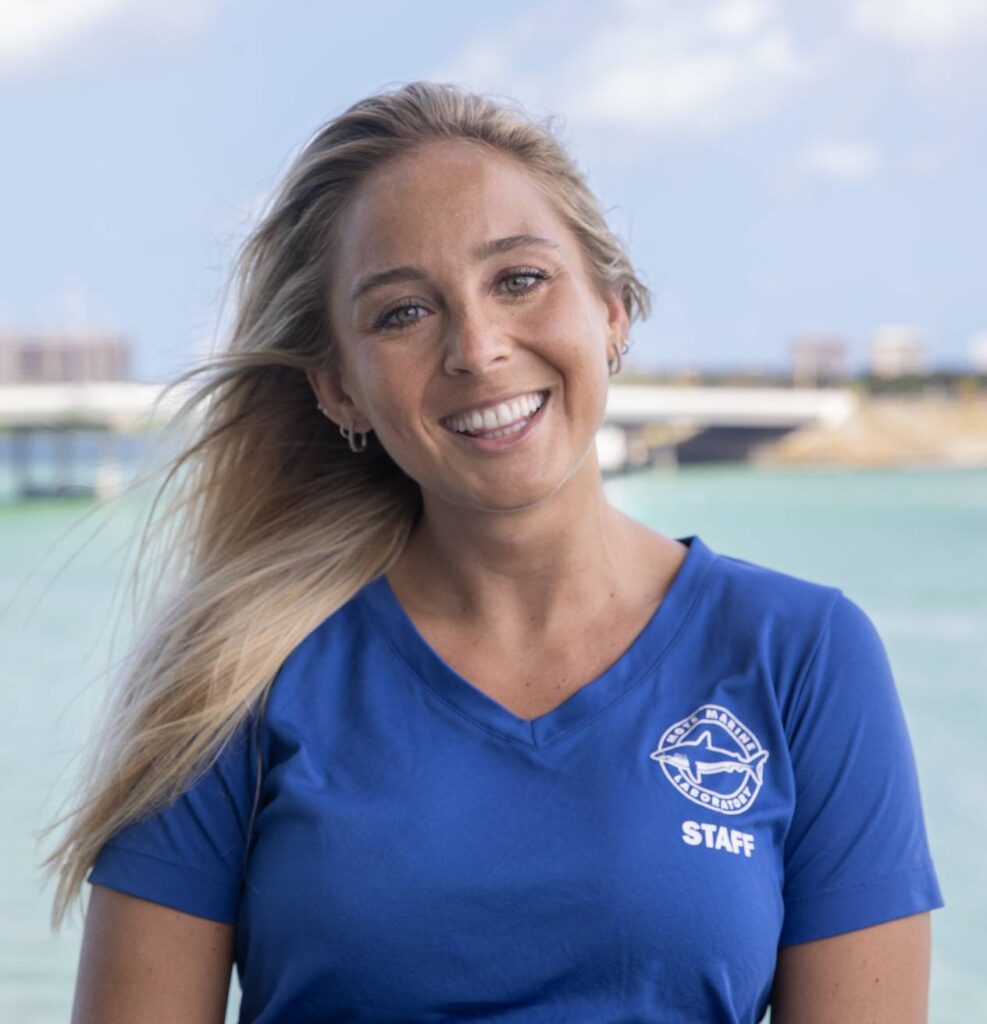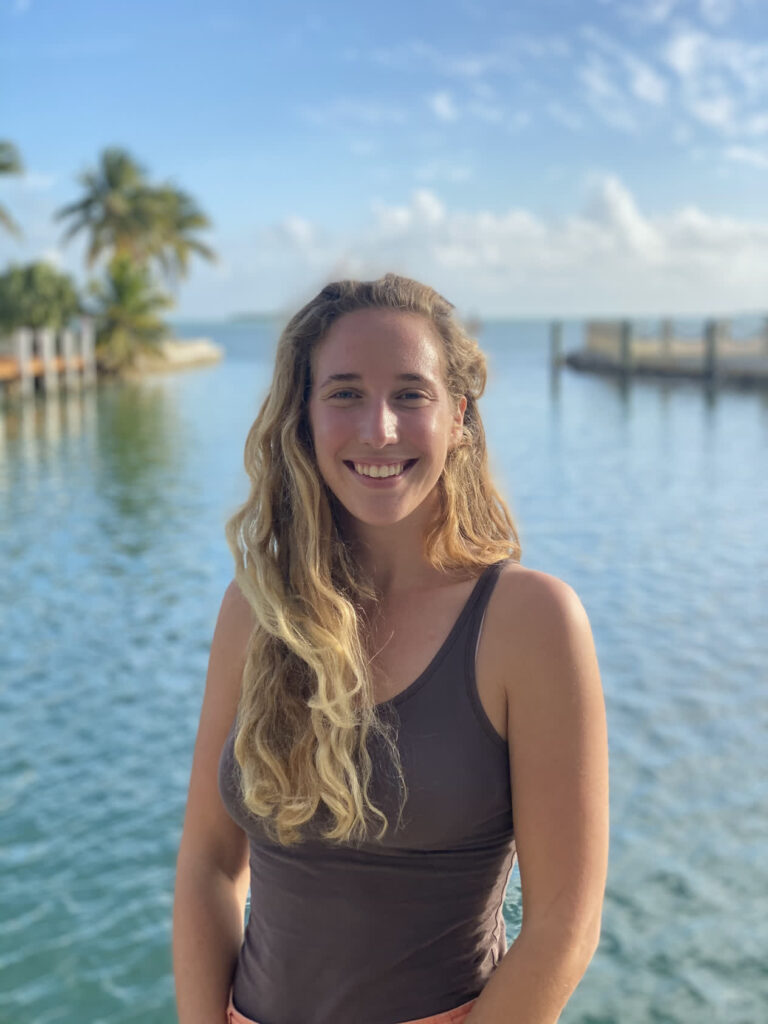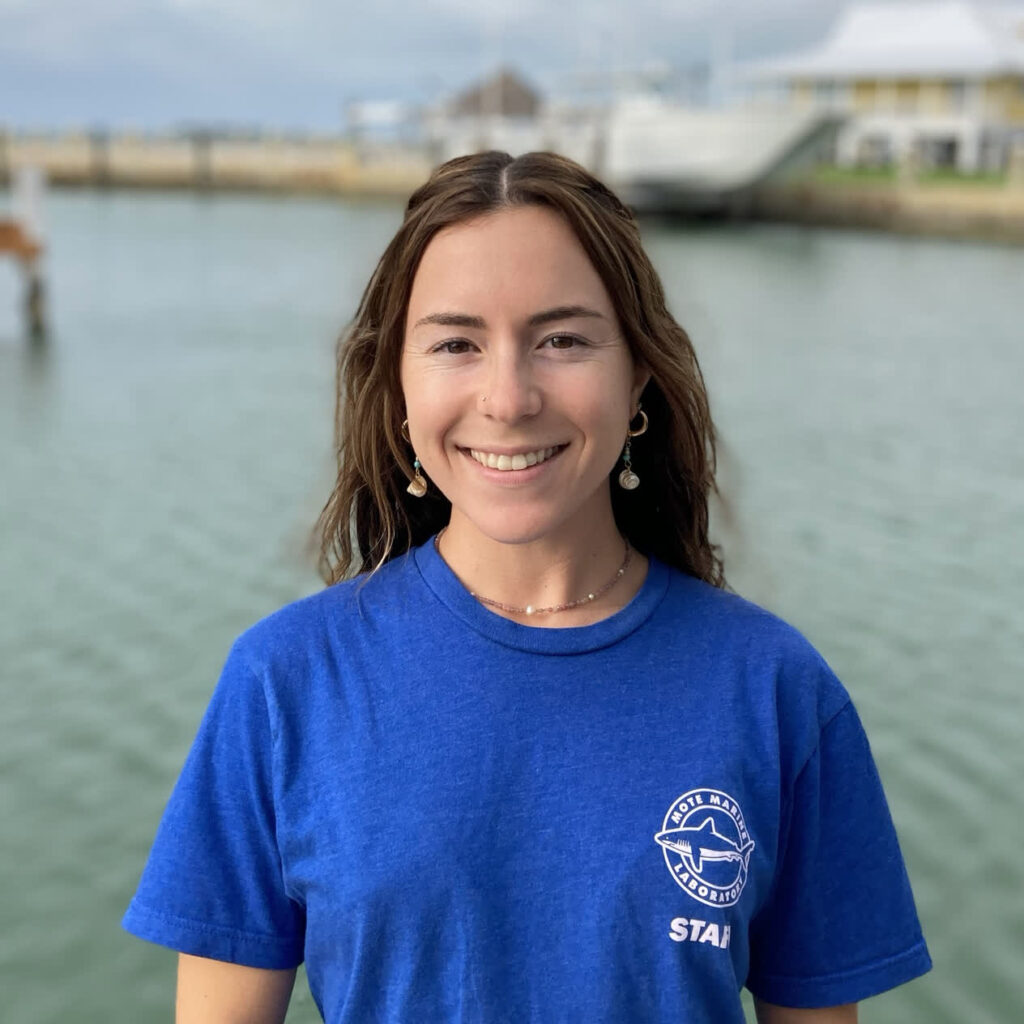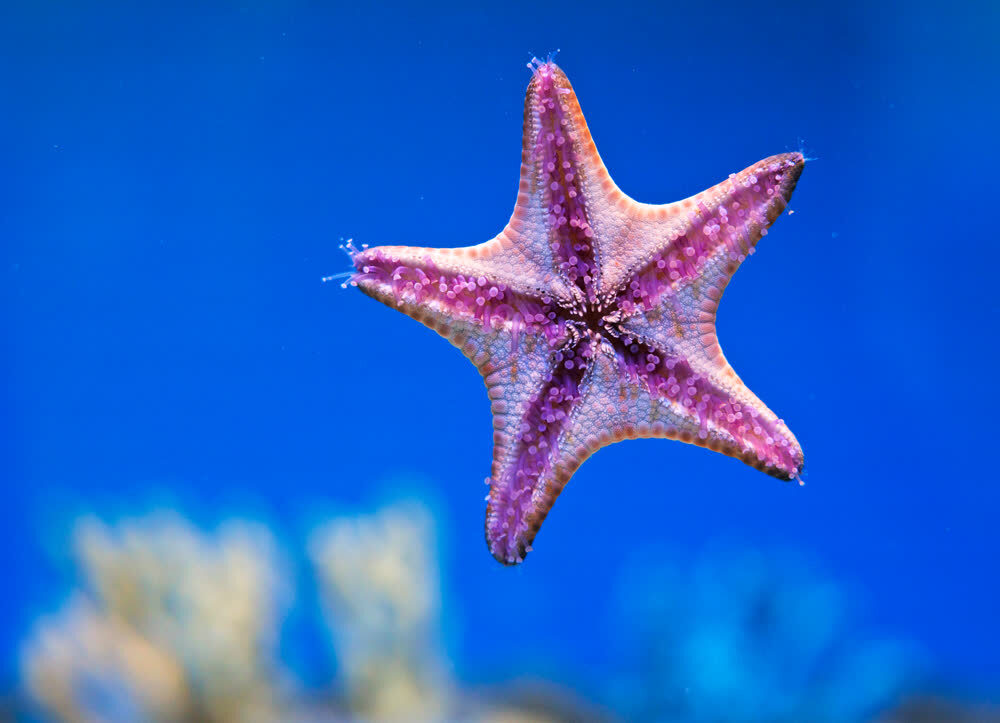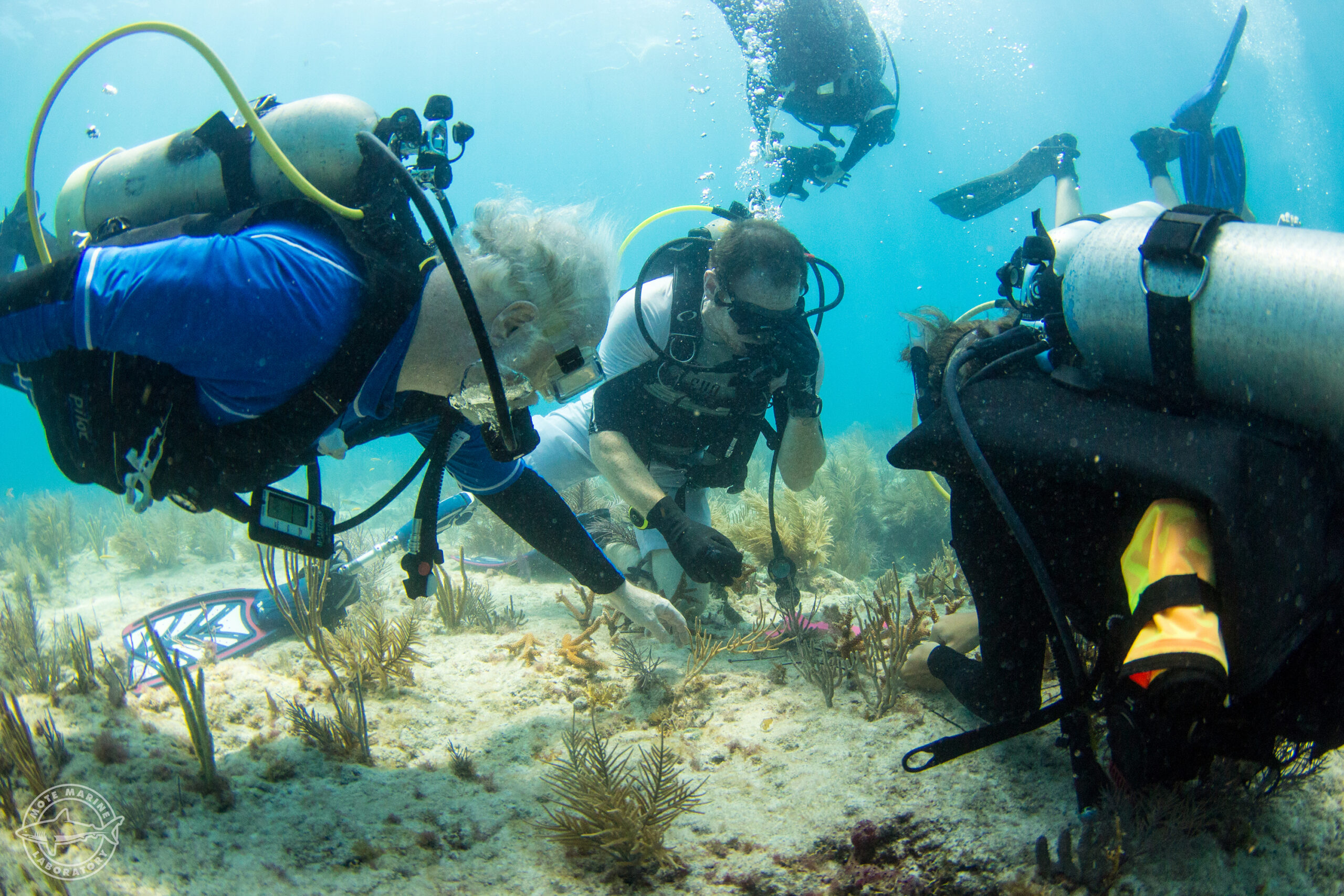Several stressors including climate change and infectious diseases have caused significant losses in living coral, particularly in Florida, leading to ecosystems on the brink of functional extinction. The Coral Health & Disease Research Program studies the susceptibility and resistance to these major threats within and among coral species to identify mechanisms that can be utilized to promote reef resilience. The Program uses a wide variety of tools to answer questions about coral health and disease including field surveys, laboratory experiments, mathematical modeling, and molecular applications.
Program Details
- Identifying the genetic basis for heat tolerance in Acropora palmata used for restoration in the Florida Keys
- Coral Cryogenic Preservation
- Using Natural-Based Products to Treat Common Endemic Coral Diseases in Florida’s Coral Reef
- Multi-omic analysis of stony coral tissue loss disease resistance in restoration genotypes of Orbicella faveolata
- Coral Larval Propagation Services for Biscayne National Park
- Using newly developed and low-cost optical tools to improve the efficacy of coral restoration practices within the Florida Keys
- Mesophotic coral reproduction and recruit nursery
- Assessing the status of the threatened Acropora palmata and mitigating disease transmission at Buck Island Reef National Monument
- Elucidating mechanisms underlying variation in Acropora bleaching survival following the 2023 marine heat wave
- Does altering source water promote the acquisition of more heat tolerant algal symbionts within sexually produced Acropora cervicornis
- Using data from a decade of coral outplant survival monitoring and resilience experiments to inform Mote’s science-based restoration practices by identifying resistant and genetically diverse corals
- Resilient Acropora cervicornis, quantifying phenotypic variability to three major stressors: high water temperature, ocean acidification, and disease
- Expanding Mote’s Restoration and Education Capacity in Florida
- Next-Generation Coral Restoration: Implementing and scaling new approaches to increase the climate resilience of Florida Coral Reef
- Automating and advancing water quality and ecosystem health sensing for coral reef restoration
- Rearing novel genotypes via assisted sexual reproduction for active coral restoration
- The role of adaptive plasticity in coral response to climate change
This list is being updated.
- Using Natural-Based Products to Treat Common Endemic Coral Diseases in Florida’s Coral Reef $388,777 (2023-2026)
- Using Newly Developed and Low-Cost Optical Tools to Improve the Efficacy of Coral Restoration Practices Within the Florida Keys $241,082 (2023-2026)
- Mesophotic coral reproduction and recruit nursery $305,549 (2024-2025)
- Laying a Foundation for the Long-Term Preservation of Coral Genetic Diversity and Abundance: Mote’s International Coral Gene Bank $500,000 (2022-2027)
- Coral Larval Propagation Services for Biscayne National Park $249,149 (2023-2028)
- Assessing the status of the threatened Acropora palmata and mitigating disease transmission at Buck Island Reef National Monument $259,354 (2024-2026)
- Automating and advancing water quality and ecosystem health sensing for coral reef restoration $52,709 (2024-2026)
- Next-Generation Coral Restoration: Implementing and scaling new approaches to increase the climate resilience of Florida Coral Reef $2,100,000 (2024-2028)
- Coral Survivor – Resist, Recover, Restore: Analysis of Mote Marine Laboratory’s Coral Restoration Data in Relation to Major Disturbances, Including the 2023 Coral Bleaching Event $29,979.27 (2024-2026)
- Coral Survivor – Resist, Recover, Restore: Elucidating mechanisms underlying variation in Acroporid bleaching and survival following the 2023 marine heat wave $100,248.21 (2024-2025)
- Does altering source water promote the acquisition of more heat tolerant algal symbionts within sexually produced Acropora cervicornis?” $30,000 (2024-2025)
- Providing visitor use support for Mote’s Elizabeth Moore International Center for Coral Reef Research and Restoration Microbial and Molecular Laboratory $38,859 (2024-2025)
- Expanding Mote’s Restoration and Education Capacity in Florida $2,000,000 (2024-2026)
- The role of adaptive plasticity in coral response to climate change $230,038 (2022-2025)
- Optimizing light spectrum to upscale grow-out of coral recruits for restoration $243,742.46 (2023-2025)
- Elkhorn (Acropora palmata) and Staghorn ( cervicornis) Emergency Florida Gene Bank $129,764 (2025)
- Living coral biorepository support for founding acroporid corals $227,497 (2025-2026)
- Hanna Koch (Monroe County)
- Courtney Klepac (Stanford University)
- Marilyn Brandt (UVI)
- Nikki Traylor Knowles (UM)
- Stephanie Rosales (NOAA AOML)
- Michael Studivan (NOAA AOML)
- Kenneth Hoadley (UAlabama)
- Mark Warner (UDel)
- Carly Kenkel (USC)
- Diego Lirman (UM)
- Mark Ladd (NOAA)
- Amanda Bourque (NPS)
- Bill Sharp (FWC)
- Rebecca Vega Thurber (USB)
- Grace Klinges (UArizona)
- Maoz Fine (IUI)
- Dustin Kemp (UGA)
- Kristen Ewen (NPS)
- Evan Gwilliam (NPS)
- Laura Mydlarz (UTA)
- Robert van Woesik (FL Tech)
- Andrew Baker (UMiami)
- Cory Krediet (Eckerd)
- Keri O’Neil (The Florida Aquarium)
- Nicole Fogarty (UNCW)
- Joana Figueiredo (Nova Southeastern)
- Leneita Fix (The Reef Institute)
- David Gilliam (Nova Southeastern)
- Jennifer Sneed (The Smithsonian)
- Valerie Paul (The Smithsonian)
- Ken Nedimyer (Reef Renewal, USA)
- Margaret Miller (SECORE)
- Brian Walker (Nova Southeastern)
- Amy Apprill (WHOI)
- Katie Curtis (Ocean Alchemists)
Get the Protect Our Reefs License Plate
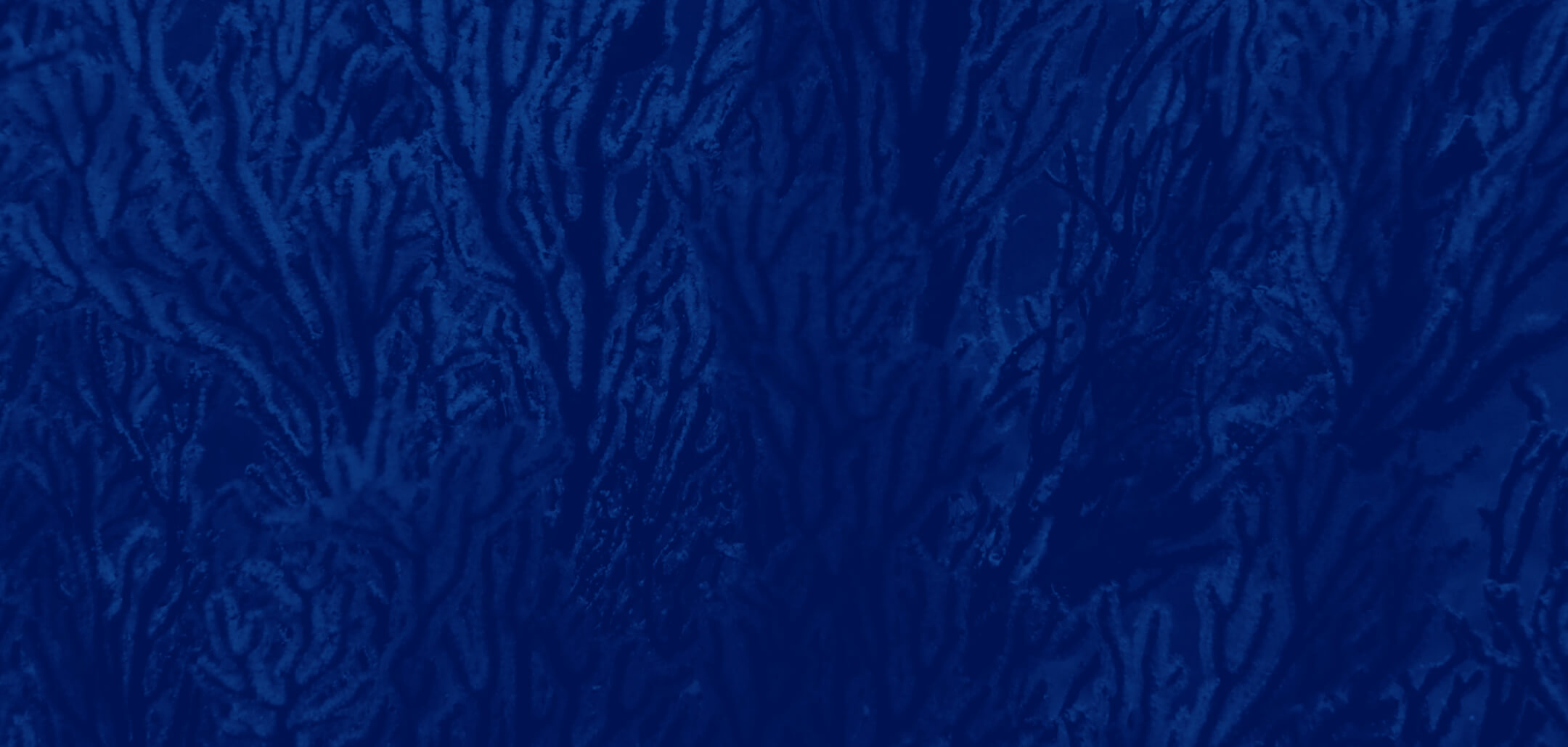
Coral Health & Disease Program Team
Additional Program Information
- Gantt S.E., Keister E.F., Jerry S.E., Tindal R.F., Manfroy A.A., Merck D.E., Muller E.M., Kemp D.W. (2024). Physiological and symbiont flexibility of reef-building corals to new habitats: Insights from clonal colony transplants. Journal of Applied Ecology. 62:207-2019
- Vega Thurber, R.L., Silva, D., Speare, L., Croquer, A., Veglia, A.J., Alvarez-Filip, L., Zaneveld, J.R., Muller, E.M. and Correa, A.M., 2024. Coral Disease: Direct and Indirect Agents, Mechanisms of Disease, and Innovations for Increasing Resistance and Resilience. Annual Review of Marine Science, 17.
- Young, B.D., Williamson, O.M., Kron, N.S., Andrade Rodriguez, N., Isma, L.M., MacKnight, N.J., Muller, E.M., Rosales, S.M., Sirotzke, S.M., Traylor-Knowles, N. and Williams, S.D., 2024. Annotated genome and transcriptome of the endangered Caribbean mountainous star coral (Orbicella faveolata) using PacBio long-read sequencing. BMC genomics, 25(1), p.226
- Ladd, M.C., Shantz, A.A., Harrell, C., Hayes, N.K., Gilliam, D.S., Muller, E.M., O’Neil, K.L., Reckenbeil, B., Craig, Z. and Lirman, D., 2024. Acclimation and size influence predation, growth, and survival of sexually produced Diploria labyrinthiformis used in restoration. Scientific reports, 14(1), p.26362.
- Cunning, R., Matsuda, S.B., Bartels, E., D’Alessandro, M., Detmer, A.R., Harnay, P., Levy, J., Lirman, D., Moeller, H.V., Muller, E.M. and Nedimyer, K. (2024). On the use of rapid acute heat tolerance assays to resolve ecologically relevant differences among corals. Coral reefs, 1-9.
- Klepac, C. N., Petrik, C. G., Karabelas, E., Owens, J., Hall, E. R., & Muller, E. M. (2024). Assessing acute thermal assays as a rapid screening tool for coral restoration. Scientific Reports, 14(1), 1898.
- Dilworth, J., Million, W. C., Ruggeri, M., Hall, E. R., Dungan, A. M., Muller, E. M., & Kenkel, C. D. (2024). Synergistic response to climate stressors in coral is associated with genotypic variation in baseline expression. Proceedings of the Royal Society B, 291(2019), 20232447.
- Hoadley, K.D., Lowry, S., McQuagge, A., Dalessandri, S., Lockridge, G., O’Donnell, S., Elder, H., Ruggeri, M., Karabelas, E., Klepac, C., Kenkel, C., Muller, E.M. (2024). Bio-optical signatures of in situ photosymbionts predict bleaching severity prior to thermal stress in the Caribbean coral species Acropora palmata. Coral Reefs, pp.1-14.
- Mydlarz L.D. & Muller, E.M. (2023). Genetics of coral resilience. Science. 381(6665): 1414-1415
- Becker, C. C., Weber, L., Zgliczynski, B., Sullivan, C., Sandin, S., Muller, E.M., Clark A.S., Kido Soule M.C., Longnecker, K., Kujawinski, E.B. & Apprill, A. (2023). Microorganisms and dissolved metabolites distinguish Florida’s Coral Reef habitats. PNAS nexus, 2(9), pgad287.
- Kiel, P. M., Formel, N., Jankulak, M., Baker, A. C., Cunning, R., Gilliam, D. S., Kenkel C.D., Langdon, C., Lirman D., Lustic C., Maxwell K., Moulding A., Moura A., Muller E.M., Schopmeyer S., Winters R. S., & Enochs, I. C. (2023). Acropora cervicornis Data Coordination Hub, an open access database for evaluating genet performance. Bulletin of marine science, 99(2), 119-136.
- Rosales, S.M., Huebner, L.K., Evans, J.S., Apprill, A., Baker, A.C., Becker, C.C., Bellantuono, A.J., Brandt, M.E., Clark, A.S., Del Campo, J., Dennison, C.E., Eaton K.R., Huntley N.E., Kellogg C.A., Medina M, Meyer JL, Muller EM, Rodriguez-Lenetty M., Salerno JL, Schill WB, Shilling EN, Stewart JM, Voss JD. 2023. A meta-analysis of the stony coral tissue loss disease microbiome finds key bacteria in unaffected and lesion tissue in diseased colonies. ISME communications, 3(1), p.19.
- Klinges, J. G., Patel, S. H., Duke, W. C., Muller, E. M., & Vega Thurber, R. L. (2023). Microbiomes of a disease-resistant genotype of Acropora cervicornis are resistant to acute, but not chronic, nutrient enrichment. Scientific Reports, 13(1), 3617.
- Hoadley KD, Lockridge G, McQuagge A, Pahl KB, Lowry S, Wong S, Craig Z, Petrik C, Klepac C and Muller EM (2023) A phenomic modeling approach for using chlorophyll-a fluorescence-based measurements on coral photosymbionts. Front. Mar. Sci. 10:1092202. doi: 10.3389/fmars.2023.1092202
- Klepac CN, Eaton KR, Petrik CG, Arick LN, Hall ER and Muller EM (2023) Symbiont composition and coral genotype determines massive coral species performance under end-of-century climate scenarios. Front. Mar. Sci. 10:1026426. doi: 10.3389/fmars.2023.1026426
- Gantt, S.E., Keister, E.F., Manfroy, A.A., Merck, D.E., Fitt, W.K., Muller, E.M. and Kemp, D.W., 2023. Wild and nursery-raised corals: comparative physiology of two framework coral species. Coral Reefs, pp.1-12.
- Baker, L.J., Reich, H.G., Kitchen, S.A., Grace Klinges, J., Koch, H.R., Baums, I.B., Muller, E.M. and Thurber, R.V., 2022. The coral symbiont Candidatus Aquarickettsia is variably abundant in threatened Caribbean acroporids and transmitted horizontally. The ISME Journal, 16(2), pp.400-411.
- Elder, H., Million, W.C., Bartels, E., Krediet, C.J., Muller, E.M. and Kenkel, C.D., 2022. Long-term maintenance of a heterologous symbiont association in Acropora palmata on natural reefs. The ISME Journal, pp.1-4.
- Eaton, K.R., Clark, A.S., Curtis, K., Favero, M., Hanna Holloway, N., Ewen, K. and Muller, E.M., 2022. A highly effective therapeutic ointment for treating corals with black band disease. Plos one, 17(10), p.e0276902.
- MacKnight, N.J., Dimos, B.A., Beavers, K.M., Muller, E.M., Brandt, M.E. and Mydlarz, L.D., 2022. Disease resistance in coral is mediated by distinct adaptive and plastic gene expression profiles. Science Advances, 8(39), p.eabo6153.
- Koch, H.R., Azu, Y., Bartels, E. and Muller, E.M., 2022. No apparent cost of disease resistance on reproductive output in Acropora cervicornis genets used for active coral reef restoration in Florida. Frontiers in Marine Science, p.1958.
- van Woesik, R., T. Shlesinger, A.G. Grottoli, R.J. Toonen, R. Vega Thurber, M.E. Warner, A. Marie Hulver, L. Chapron, R.H. McLachlan, R. Albright, E. Crandall, T.M. DeCarlo, M.K. Donovan, J. Eirin-Lopez, H.B. Harrison, S.F. Heron, D. Huang, A. Humanes, T. Krueger, J.S. Madin, D. Manzello, L.C. McManus, M. Matz, E.M. Muller, M. Rodriguez-Lanetty, M. Vega-Rodriguez, C.R. Voolstra, & J. Zaneveld. (2022). Coral-bleaching responses to climate change across biological scales. Global Change Biology, 28, 4229–4250. https://doi.org/10.1111/gcb.16192
- Huntley, N., Brandt, M.E., Becker, C.C., Miller, C.A., Meiling, S.S., Correa, A., Holstein, D.M., Muller, E.M., Mydlarz, L.D., Smith, T.B. and Apprill, A., 2022. Experimental transmission of Stony Coral Tissue Loss Disease results in differential microbial responses within coral mucus and tissue. ISME Communications, 2(1), pp.1-11.
- Veglia AJ, Beavers K, Van Buren EW, Meiling SS, Muller EM, Smith TB, Holstein DM, Apprill A, Brandt ME, Mydlarz LD, Correa AM. (2022) Alphaflexivirus Genomes in Stony Coral Tissue Loss Disease-Affected, Disease-Exposed, and Disease-Unexposed Coral Colonies in the US Virgin Islands. Microbiology Resource Announcements. Feb 17;11(2):e01199-21.
- Shaver E, Mcleod E, Hein H, Palumbi S, Quigley K, Vardi T, Mumby P, Smith D, Montoya-Maya P, Muller EM, Banaszak A, McCleod I, Wachenfeld D (2022). Integrating resilience and climate change adaptation into coral reef restoration. Global Change Biology.
- Klinges, J. G., Patel, S. H., Duke, W. C., Muller, E. M., & Vega Thurber, R. L. (2022). Phosphate enrichment induces increased dominance of the parasite Aquarickettsia in the coral Acropora cervicornis. FEMS Microbiology Ecology, 98(2), fiac013.
- Williams SD, Klinges G, Zinman S, Clark AS, Bartels E, Villoch Diaz-Maurino M, Muller EM (2022) Geographically driven differences in microbiomes of Acropora cervicornis originating from different regions of Florida’s Coral Reef. PeerJ , 10, e13574.
- Merck D, Petrik CG, Manfroy AA, Muller EM (2022) Optimizing seawater temperature conditions to increase the growth and survival of corals within an ex-situ coral nursery. PeerJ, 10, e13017.
- Dobbelaere T, Holstein DM, Muller EM, Gramer LJ, Mceachron L, Williams SD, Hanert E (2022) Connecting the dots: Transmission of stony coral tissue loss disease from the Marquesas to the Dry Tortugas. Frontiers in Marine Science 9:778938. doi: 10.3389/fmars.2022.778938
- Rosales SM, Huebner LK, Clark AS, McMinds R, Ruzicka R, Muller EM (2022) Bacterial metabolic potential and micro-eukaryotes enriched in stony coral tissue loss disease lesions. Frontiers in Marine Science 8:776859. doi: 10.3389/fmars.2021.776859
- Macknight N, Arick L, Knowlton A, Henry M, Pierce R, Muller EM (2022). Insecticide exposure induces microbial shift towards bioremediation in Montastraea cavernosa. Frontiers in Marine Science 9:748308. doi: 10.3389/fmars.2022.748308
- Gravinese PM, Douwes A, Eaton KR, Muller EM (2021) Ephemeral hypoxia reduces oxygen consumption in the Caribbean coral Orbicella faveolata. Coral Reefs https://doi.org/10.1007/s00338-021-02197-5
- Clark, A.S.; Williams, S.D.; Maxwell, K.; Rosales, S.M.; Huebner, L.K.; Landsberg, J.H.; Hunt, J.H.; Muller, E.M. (2021) Characterization of the Microbiome of Corals with Stony Coral Tissue Loss Disease along Florida’s Coral Reef. Microorganisms, 9, 2181. https://doi.org/10.3390/microorganism
- Cunning R, Parker KE, Johnson-Sapp K, Karp RF, Wen AD, Williamson OM, Bartels E, D’Alessandro M, Gilliam DS, Hanson G, levy J, Lirman D, Maxwell K, Million WC, Moulding AL, Moura A, Muller EM, Nedimyer K, Reckenbeil B, na Hooidonk R, Dahlgren C, Kenkel C, Parkinson JE, Baker AC. (2021). Census of heat tolerance among Florida’s threatened staghorn corals finds resilient individuals throughout existing nursery populations. Proc. R. Soc. B 288: 20211613. https://doi.org/10.1098/rspb.2021.1613
- Muller EM, Dungan AM, Million WC, Eaton KR, Petrik C, Bartels E, Hall ER, Kenkel CD (2021) Heritable variation and lack of tradeoffs suggest adaptive capacity in Acropora cervicornis despite negative synergism under climate change scenarios. Proc. R. Soc. B 288: 20210923. https://doi.org/10.1098/rspb.2021.0923
- Voolstra CR, Suggett DJ, Peixoto R, Parkinson JE, Quigley KM, Silveira CB, Sweet M, Muller EM, Barshis DJ, Bourne DG, Aranda M (2021) Extending the natural adaptive capacity of coral holobionts. Nature Reviews Earth & Environment, DOI: https://doi.org/10.1038/s43017-021-00214-3
- Banister, RB, Schwarz, MT, Fine, M, Ritchie, KB, & Muller, EM (2021). Instability and Stasis Among the Microbiome of Seagrass Leaves, Roots and Rhizomes, and Nearby Sediments Within a Natural pH Gradient. Microbial Ecology, 1-14.
- Eaton KR, Landsberg JH, Kiryu Y, Peters EC, Muller EM. (2021) Measuring stony coral tissue loss disease induction and lesion progression within two intermediately susceptible species, Montastraea cavernosa and Orbicella faveolata. Front. Mar. Sci. 8:717265. doi: 10.3389/fmars.2021.717265
- Baker, L.J., Reich, H.G., Kitchen, S.A. Klinges JG, Koch HR, Baums IB, Muller EM, Vega Thurber R. (2021) The coral symbiont Candidatus Aquarickettsia is variably abundant in threatened Caribbean acroporids and transmitted horizontally. ISME J. https://doi.org/10.1038/s41396-021-01077-8
- Traylor-Knowles N, Connelly MT, Young BD, Eaton K, Muller EM, Paul VJ, Ushijima B, DeMerlis A, Drown MK, Goncalves A, Kron N, Snyder GA, Martin C and Rodriguez K (2021) Gene Expression Response to Stony Coral Tissue Loss Disease Transmission in M. cavernosa and O. faveolata from Florida. Front. Mar. Sci. 8:681563. doi: 10.3389/fmars.2021.681563
- MacKnight N, Cobleigh K, Lasseigner D, Chaves-Fonnegra A, Gutting A, Dimos B, Antoine J, Fuess L, Ricci C, Butler C, Muller EM, Mydlarz LD, Brandt M. Microbial dysbiosis reflects disease resistance in divers coral species. Commun Biol 4, 679 (2021). https://doi.org/10.1038/s42003-021-02163-5
- Williams SD, Walter CS and Muller EM (2021) Fine Scale Temporal and Spatial Dynamics of the Stony Coral Tissue Loss Disease Outbreak Within the Lower Florida Keys. Front. Mar. Sci. 8:631776. doi: 10.3389/fmars.2021.631776
- Meiling SS, Muller EM, Lasseigne D, Rossin A, Veglia AJ, MacKnight N, Dimos B, Huntley N, Correa AMS, Smith TB, Holstein DM, Mydlarz LD, Apprill A, Brandt, ME. Variable Species Responses to Experimental Stony Coral Tissue Loss Disease (SCTLD) Exposure (2021). Front. Mar. Sci. 8:670829. doi: 10.3389/fmars.2021.670829
- Meiling S, Muller EM, Smith TB and Brandt ME (2020) 3D Photogrammetry Reveals Dynamics of Stony Coral Tissue Loss Disease (SCTLD) Lesion Progression Across a Thermal Stress Event. Front. Mar. Sci. 7:597643. doi: 10.3389/fmars.2020.597643
- van Woesik R, Banister RB, Bartels E, Gillium DS, Goergen EA, Lustic C, Maxwell K, Moura A, Muller EM, Schopmeyer S, Winters RS, Lirman D (2020) Differential survival of nursery-reared Acropora cervicornis outplants along the Florida reef tract. doi: 10.1111/rec.13302
- Sharp W, Shea CP, Maxwell KE, Muller EM, Hunt JH. (2020) Evaluating the small-scale epidemiology of the stony coral tissue loss disease in the middle Florida Keys. PLoS ONE. 15(11): e0241871. https://doi.org/10.1371/journal.pone.0241871
- Dobbelaere T, Muller EM, Gramer LJ, Holstein DM, Hanert E. (2020) Coupled epidemio-hydrodynamic modeling to understand the spread of a deadly coral disease in Florida. Front. Mar. Sci. 7:591881. doi: 10.3389/fmars.2020.591881
- Klinges JG, Maher RL, Vega Thurber RL, Muller EM (2020) Parasitic “Candidatus Aquarickettsia rohweri” is a marker of disease susceptibility in Acropora cervicornis but is lost during thermal stress. Environmental Microbiology. doi:10.1111/1462-2920.15245
- Rosales SM, Clark AS, Huebner LK., Ruzicka RR., Muller EM (2020). Rhodobacterales and Rhizobiales are associated with Stony Coral Tissue Loss Disease and its suspected sources of transmission. Frontiers in Microbiology, 11, 681.
- Muller EM, Sartor C, Alcaraz N, van Woesik R (2020) Spatial epidemiology of stony-coral-tissue-loss disease in Florida. Front. Mar. Sci. 7:163. doi: 10.3389/fmars.2020.00163
- Muller EM, Bartels E, Baums IB (2018) Bleaching causes loss of disease resistance within the threatened coral species Acropora cervicornis. eLife 7:e35066
- Page CA, Muller EM, Vaughan DE (2018) Microfragmenting for the successful restoration of slow growing massive corals. Ecological Engineering 123: 86 – 94
- Hall ER, Muller EM, Goulet T, Bellworthy J, Ritchie KB, Fine M (2018) Eutrophication may compromise the resilience of the Red Sea coral Stylophora pistillata to global change. Marine Pollution Bulletin 131: 701 – 711
- Randall, CJ, Muller EM, Whitcher EM, Code T, Pollock C, Lundgren I, Hillis-Starr Z (2018). Testing methods to mitigate Caribbean yellow-band disease on Orbicella faveolata. PeerJ6: e4800; DOI 10.7717/peerj.4800
- Morrow KM, Muller EM, Lesser MP (2018). How does the coral microbiome cause, respond to or modulate the bleaching process? In: van Oppen M, Lough J (eds) Coral Bleaching: Pattern, Processes, Causes and Consequences. 2nd Edition. Springer
- Muller EM, Leporacci NM, Macartney KJ, Shea AG, Crane RE, Hall ER, Ritchie KB (2017). Low pH reduces the virulence of black band disease on Orbicella faveolata. PLoS ONE 12(6): e0178869
- Muller EM, Fine M, Ritchie K (2016). The resilient microbiome of inter and sub-tidal anemone species under increasing pCO2. Sci. Rep. 6, 37387; doi: 10.1038/srep37387
- Bright AJ, Brandt M, Muller EM, Smith T (2016) Disease prevalence and snail predation associated with swell-generated damage on the threatened coral, Acropora palmata (Lamarck). Frontiers in Marine Science. 3: 77
- Randall CJ, Jordan-Garza AG, Muller EM, van Woesik R (2016) Does dark-spot syndrome experimentally transmit among Caribbean corals? PLoS ONE 11(1): e0147493. doi:10.1371/journal.pone.0147493
- Muller EM, van Woesik R (2014) Genetic susceptibility, colony size, and water temperature drive white-pox disease on the coral Acropora palmata. PLoS ONE 9(11): e110759. doi:10.1371/journal.pone.0110759
- Randall CJ, Jordan-Garza AG, Muller EM, van Woesik R (2014) Relationships between the history of thermal stress and the relative risk of diseases of Caribbean corals. Ecology 95: 1981-1994
- Muller EM, Rogers CS, van Woesik R. (2014) Early signs of recovery of Acropora palmata in St. John, US Virgin Islands. Marine Biology 161:359-365
- Roth L, Muller EM, van Woesik R (2013) Tracking Acropora fragmentation and population structure through thermal-stress events. Ecological Modelling 263:223-232.
- Muller EM, Harvell CD, Willis BL, Haapkylä J, Raymundo LJ, Syafyudin Y, Wilson JR (2012). Coral health and disease in the Spermonde Archipelago and Wakatobi, Sulawesi. Journal of Indonesian Coral Reefs 1:147-159
- Muller EM, van Woesik R. (2012) Caribbean coral diseases: primary transmission or secondary infection? Global Change Biology 18:3529-3535
- Rogers CS, Muller EM (2012) Bleaching, disease and recovery in the threatened scleractinian coral Acropora palmata in St. John, US Virgin Islands: 2003-2010. Coral Reefs 31:807-819
- Jordan-Garza AG, Muller EM, Burman SG, van Woesik R. (2010). Susceptibility of coral-disease models. PNAS (2011) 108:E110-E11
- Muller EM, van Woesik R. (2010). Black-band disease dynamics: prevalence, incidence, and acclimatization of light. JEMBE 397:52-57
- Eakin M, Morgan JA,…Muller EM et al. (2010). Caribbean Corals in Crisis: Record thermal stress, bleaching, and mortality in 2005. PLoS One 5(11): e13969. doi:10.1371/journal.pone.0013969
- Reed K, Muller EM, van Woesik R. (2010). Coral immunology and resistance to disease. Dis Aquat Org 90:85-92
- Rogers CS, Muller EM, Spitzack T, Miller J. (2009). Extensive coral mortality in the US Virgin Islands in 2005/2006: A review of the evidence for synergy among thermal stress, coral bleaching and disease. Car J of Sci. 45:204-214
- Muller EM, van Woesik R. (2009). Shading reduces coral-disease progression. Coral Reefs. 28:757-760
- Miller J, Muller EM, Rogers CS, et al. (2009). Coral disease following massive bleaching in 2005 causes 60% decline in coral cover on reefs in the US Virgin Islands (USVI). Coral Reefs 28:925-937
- Muller EM, Rogers CS, Spitzack A, van Woesik R. (2008). Bleaching increases the likelihood of disease on Acropora palmata (Lamarck) at Hawksnest Bay, St. John, US Virgin Islands; Coral Reefs 27:191-195
- Rogers CS, Miller J, Muller EM, et al. (2008). Ecology of Coral Reefs in the US Virgin Islands. Chapter 8. In: Riegl B, Dodge RE (eds). Coral Reefs of the USA. Springer. pgs 303-374.

